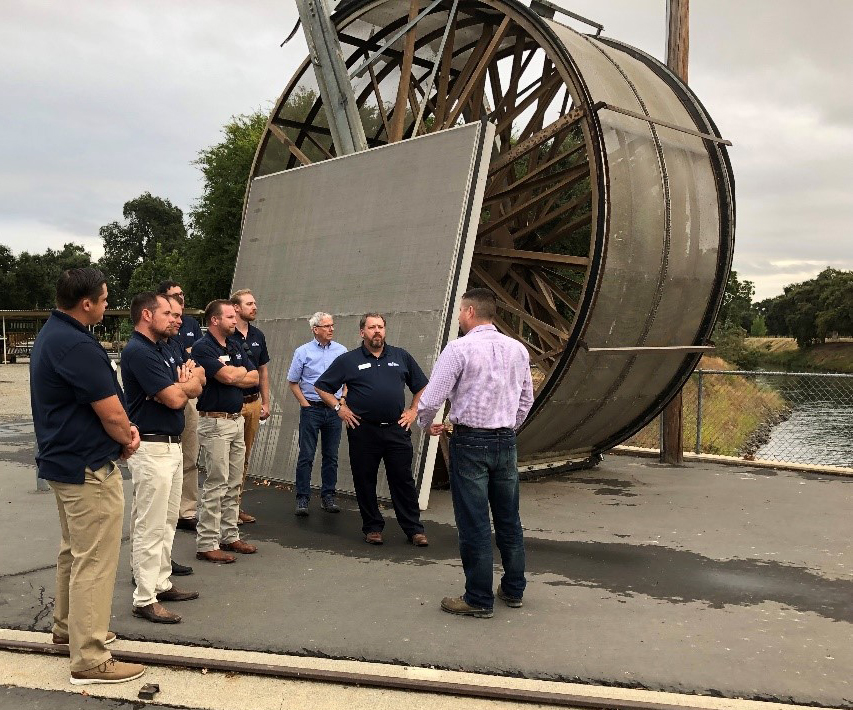 Glen-Colusa irrigration pump station
Glen-Colusa irrigration pump station
Oct 18, 2019
SACRAMENTO, CA -- The third session of the Rice Leadership Development Program (RLDP) provided the opportunity to learn about the rice industry and other agricultural industries in California. I had never been to the rice production area of California and my exposure to the industry was limited but, having heard positive things about it, I was looking forward to this session.
There were a few reoccurring themes throughout the week here. First, there was a strong emphasis on grain quality at every stop along the way, including Farmers’ Rice Cooperative, American Commodity Company, Sun Valley Rice, Lundberg Farms, and the Rice Experiment Station. The discussions centered on rice as a food item rather than a commodity, and we saw many different rice products, including sprouted rice, sake and sake mills, rice cakes, chips, pastas, and premium rice varieties and blends.
Water was a common theme at nearly every stop, and the cost of water, water rights, and the concept of water districts were all topics of discussion. The importance of these districts was highlighted by the fact that we were always told what district we were in at each stop! We visited the Glen-Colusa Irrigation Pump Station – an impressive operation – and it was amazing to see the great lengths taken to ensure that fish do not enter the canals.
The relationship between rice and the environment was emphasized throughout the week. The California rice industry has been able to turn negative perceptions into positive ones by getting out in front of issues and being proactive in their approach. The various communication channels are exceptional and tell a great story to a wide audience. For example, the transition from burning rice straw to flooding fields to decompose straw while simultaneously recreating waterfowl habitat is a great success story.
The diversity of crops we saw while driving around was another eye-opener. From tree nuts to vegetables to fruits, we saw many crops that I had never observed in commercial production. When visiting Kim Gallagher’s rice field, we observed a tomato harvest in the adjacent field. At Leo LaGrande’s farm, we observed walnuts and almonds, and got to see the beginning of the almond harvesting process. At Costa Farms in the Salinas Valley, we observed large-scale lettuce harvesting and discussed the different challenges they face related to food safety, shipping, and labor.
A highlight of the trip was the chartered flight throughout the Central Valley. Kent Wiley with SunFoods in Woodlands was our guide and provided all sorts of information on the landscape and crops below.
My initial impression after this session was the many differences between the rice industries in California compared to the South. However, in the larger context there are many similarities and opportunities where we can learn from one another’s experiences. The California rice industry has strong leadership and is forward thinking and innovative, and some of the issues they have faced could become issues elsewhere in the industry in the future.
My classmates and I owe sincere thanks to the program sponsors: John Deere Company, RiceTec, and American Commodity Company. Their support of the program provides priceless opportunities for the participants. I also would like to thank everyone who hosted us for all the great meals and hospitality, and for sharing experiences and perspectives. It was a memorable week for all!